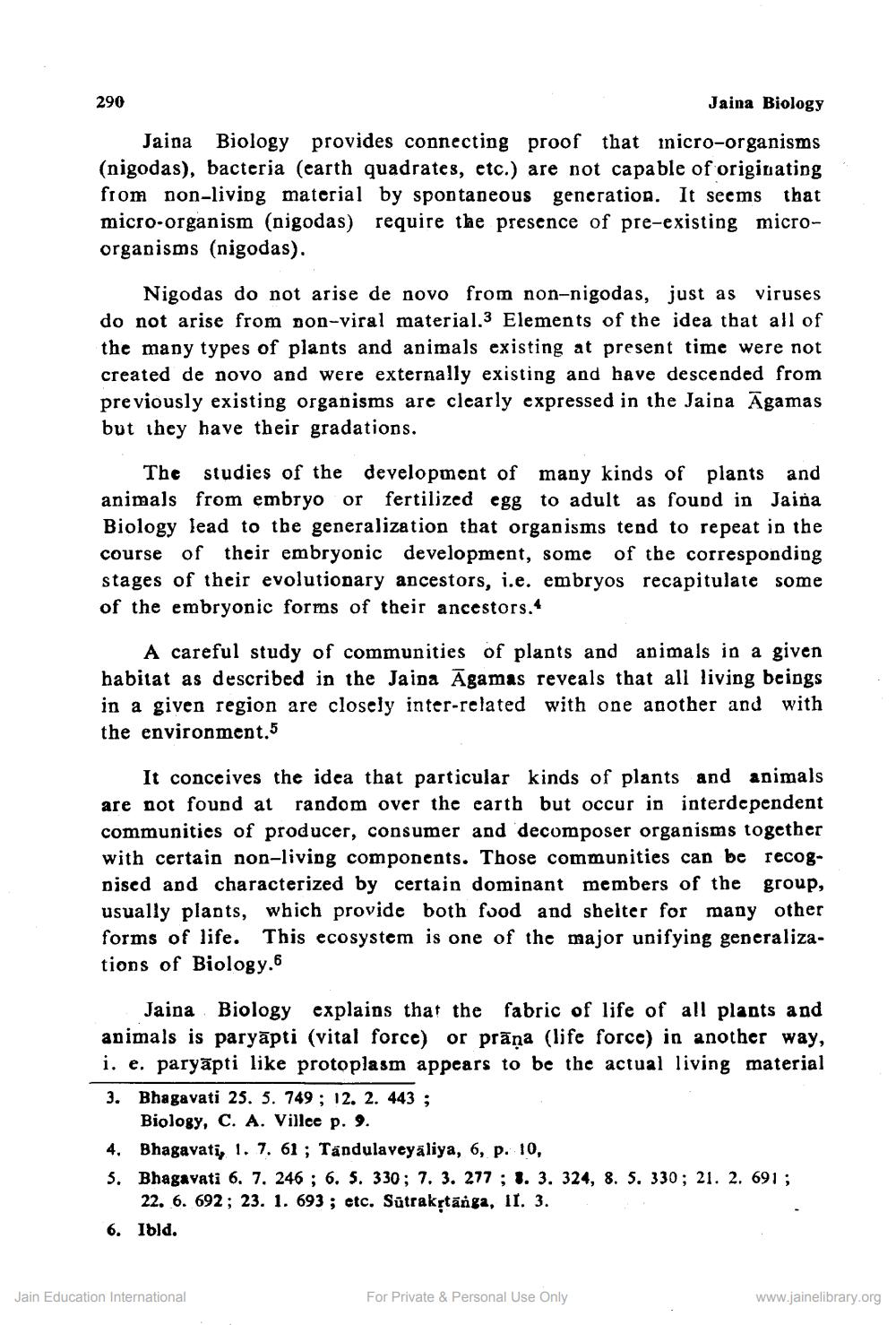________________
Jaina Biology
Jaina Biology provides connecting proof that micro-organisms (nigodas), bacteria (earth quadrates, etc.) are not capable of originating from non-living material by spontaneous generation. It seems that micro-organism (nigodas) require the presence of pre-existing microorganisms (nigodas).
290
Nigodas do not arise de novo from non-nigodas, just as viruses do not arise from non-viral material.3 Elements of the idea that all of the many types of plants and animals existing at present time were not created de novo and were externally existing and have descended from previously existing organisms are clearly expressed in the Jaina Agamas but they have their gradations.
The studies of the development of many kinds of plants and animals from embryo or fertilized egg to adult as found in Jaina Biology lead to the generalization that organisms tend to repeat in the course of their embryonic development, some of the corresponding stages of their evolutionary ancestors, i.e. embryos recapitulate some of the embryonic forms of their ancestors.4
A careful study of communities of plants and animals in a given habitat as described in the Jaina Agamas reveals that all living beings in a given region are closely inter-related with one another and with the environment.5
It conceives the idea that particular kinds of plants and animals are not found at random over the earth but occur in interdependent communities of producer, consumer and decomposer organisms together with certain non-living components. Those communities can be recognised and characterized by certain dominant members of the group, usually plants, which provide both food and shelter for many other forms of life. This ecosystem is one of the major unifying generalizations of Biology.6
Jaina Biology explains that the fabric of life of all plants and animals is paryapti (vital force) or prana (life force) in another way, i. e. paryapti like protoplasm appears to be the actual living material 3. Bhagavati 25. 5. 749; 12. 2. 443;
Biology, C. A. Villee p. 9.
4. Bhagavati, 1. 7. 61; Tandulaveyāliya, 6, p. 10,
5.
Bhagavati 6. 7. 246; 6. 5. 330; 7. 3. 277; 8. 3. 324, 8. 5. 330; 21. 2. 691; 22. 6. 692; 23. 1. 693; etc. Sūtrakṛtānga, II. 3.
6. Ibld.
Jain Education International
For Private & Personal Use Only
www.jainelibrary.org




